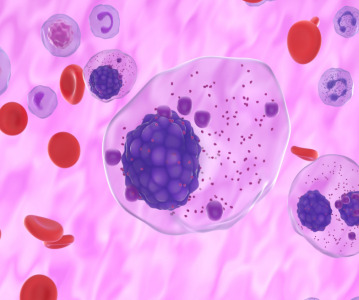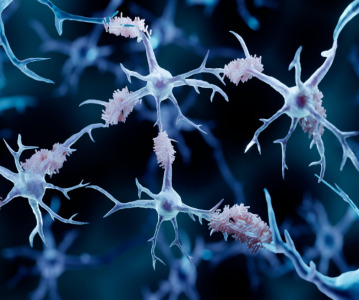New cell-based system can screen drug candidates for cardiac toxicity
A new stem cell-derived system for screening experimental drugs for cardiotoxicity could identify dangerous side effects early in the development process.
A new stem cell-derived system for screening experimental drugs for cardiotoxicity could identify dangerous side effects early in the development process, thereby potentially saving time, lives and money, according to Evan F. Cromwell, PhD, of Molecular Devices, LLC, Sunnyvale, CA, in a presentation at the American Society for Cell Biology's Annual Meeting, Dec 17 in San Francisco.
Vioxx is probably the most notorious example of a blockbuster drug removed from the market after FDA approval because of adverse cardiac side effects, Dr. Cromwell explained, but it was not the only drug to fail because of unexpected negative effects on the heart.
Cardiotoxicity remains one of the primary reasons new drugs wash out in preclinical or even full clinical trials, he said. There is often a huge cost for these failures, both to the pharmaceutical companies whose long-term investments can be wiped out in a single study and to consumers who face the risk of unintended harm.
Currently cardiotoxicity is detected using electrophysiology-based assays for interactions of compounds with potassium ion channels. However, available assays are not effective at assessing potential adverse interactions with other biochemical or contractile processes.
The need for better cardiotoxicity assays more predictive of myocardial performance led Dr. Cromwell, Oksana Sirenko, PhD, and colleagues at the California biotech, Molecular Devices, to develop an in vitro system that employs stem cell-derived cardiomyocytes to screen for potential adverse cardiac effects.
Stem cell-derived cardiomyocytes are especially suitable for an in vitro system, Dr. Cromwell explains, because they express ion channels vital for the cardiomyocytes' function and demonstrate spontaneous mechanical and electrical activity similar to that of native cardiac cells. When these cultured cardiomyocytes form a confluent layer and reach sufficient maturity, they begin to contract spontaneously. The team then employs a fast kinetic fluorescence imaging method to monitor fluctuations in intracellular calcium ion (Ca2+) levels during contractions. This provides a direct assessment of Ca2+ handling with surrogate assessments of electrophysiological activity in the muscle cell membrane and beat rate.
Phenotypic deviations from normal contractions that can be measured in the improved assay include beat rate, peak width and pattern irregularities. This multiparametric characterization of a compound's perturbation of cardiomyocyte contractions can also yield insights into mechanisms of action (MOA).
Dr. Cromwell reports, "We have characterized numerous pharmacological compounds and detected concentration-dependent modulation of beating rate and atypical patterns consistent with their MOA." This assay shows great promise to exclude preclinical candidates that have cardiotoxicity or other cardio safety issues, according to Dr. Cromwell.
Related News
-
News BioNTech to begin mRNA vaccine manufacturing in Rwanda by 2025
German biotechnology company BioNTech has stated their intentions to begin production at their mRNA vaccine factory in Rwanda by 2025, which will mark the first foreign mRNA vaccine manufacturing site on the continent of Africa. -
News Identifying Alzheimer’s Disease biomarker proteins with whole blood tests
A University of Manchester spin-out pharmaceutical company, PharmaKure, has reported successful study results for the quantification of Alzheimer’s Disease biomarker proteins with a whole blood test. -
News Bill & Melinda Gates Foundation to boost mRNA vaccine initiatives in Africa with USD $40m
To address vaccine inequality and accessibility issues, the Bill & Melinda Gates Foundation aims to deliver USD $40m to various biotech companies and vaccine manufacturers in support of mRNA vaccine development. -
News CPHI Podcast Series: Exploring neurological frontiers in Alzheimer's and beyond
The next episode of the CPHI Podcast Series delves into the science and background behind some recent developments in the field of Alzheimer's disease and neurological disorders. -
News Is patient centricity the future of pharmaceutical manufacturing?
In this interview with Sandra Sánchez y Oldenhage, President of PharmAdvice, she speaks to the importance of considering patients in the manufacturing stages of the pharmaceutical supply chain, and how it can redefine healthcare. -
News CPHI Podcast Series: How to leverage AI for Drug Discovery
Artificial intelligence is the topic of debate in the latest episode from the CPHI Podcast Series, where Digital Editor Lucy Chard speaks with Bill Whitford of DPS Group about the integration of AI in healthcare. -
News Pfizer forges ahead with blood cancer therapy after approval from FDA
Pfizer gains accelerated approval from the US FDA for their new bispecific antibody therapy for multiple myeloma, set to address an unmet need for patients. -
News Alzheimer's drug donanemab deemed effective in landmark clinical trial
Results from the TRAILBLAZER-ALZ 2 Randomised Clinical Trial into the use of donanemab to treat early symptoms of Alzheimer’s disease have been analysed.
Position your company at the heart of the global Pharma industry with a CPHI Online membership
-
Your products and solutions visible to thousands of visitors within the largest Pharma marketplace
-
Generate high-quality, engaged leads for your business, all year round
-
Promote your business as the industry’s thought-leader by hosting your reports, brochures and videos within your profile
-
Your company’s profile boosted at all participating CPHI events
-
An easy-to-use platform with a detailed dashboard showing your leads and performance







